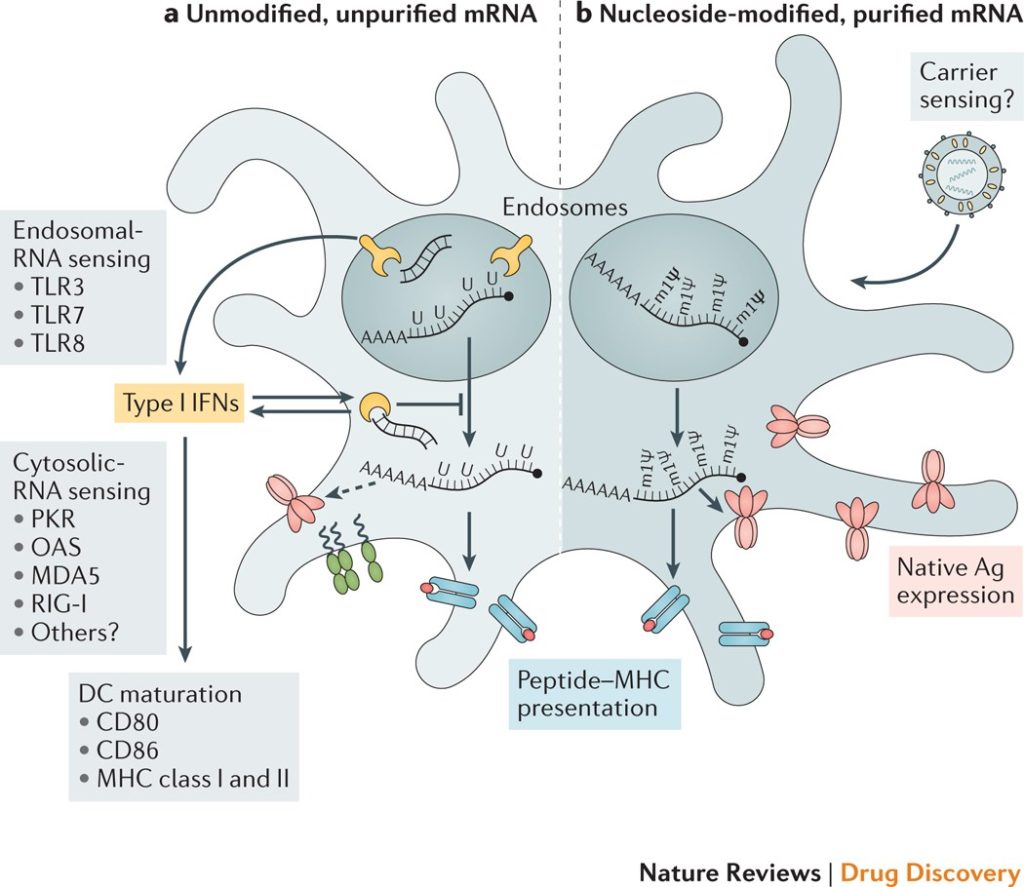The genetic code, encoded within the DNA of every living organism, holds the key to life’s fundamental processes and functions. Deciphering this intricate code has long been a pursuit of scientists seeking to understand the mysteries of biology and harness its power for medical breakthroughs. Now, a groundbreaking study led by researchers at Princeton University has demonstrated how language models, inspired by artificial intelligence (AI), can read and interpret the genetic code, leading to the optimization of mRNA vaccines and offering new insights into gene regulation.
Decoding the Central Dogma: The Role of mRNA in Protein Production The central dogma of biology outlines the flow of genetic information from DNA to RNA to proteins, with messenger RNA (mRNA) serving as the intermediary molecule responsible for translating genetic instructions into proteins. While mRNA plays a crucial role in protein synthesis, only a portion of its sequence encodes the protein itself, with the remaining untranslated regions governing essential aspects of the translation process. Understanding and optimizing these untranslated regions present a unique opportunity to enhance the efficiency and effectiveness of mRNA-based therapeutics, including vaccines.
Harnessing Language Models for Genetic Decoding Drawing inspiration from the field of natural language processing, researchers at Princeton University developed a novel language model capable of decoding and optimizing mRNA sequences for improved protein production. Unlike traditional methods that rely on complex biochemical assays and trial-and-error experimentation, the language model leverages semantic representation and machine learning techniques to analyze and predict the functional properties of mRNA sequences. By training the model on a diverse range of genetic data, researchers were able to uncover new insights into gene regulation and design highly efficient mRNA vaccines.
Optimizing mRNA Vaccines for Enhanced Efficacy One of the key applications of the language model is in the design and optimization of mRNA vaccines, particularly in the context of infectious diseases such as COVID-19. By focusing on the untranslated regions of mRNA, researchers were able to identify sequences that significantly improve the efficiency of protein production, thereby enhancing the immune response elicited by the vaccine. Through a combination of computational analysis and experimental validation, the optimized mRNA sequences demonstrated superior performance compared to existing benchmarks, offering a promising pathway for the development of next-generation vaccines.
Beyond Vaccines: Unraveling the Language of Disease While the immediate focus of the study was on vaccine development, the implications of the language model extend far beyond infectious diseases. By decoding the untranslated regions of mRNA, researchers gained valuable insights into gene regulation—a fundamental process underlying various diseases and disorders. The ability to predict and manipulate mRNA sequences opens new avenues for targeted therapeutics, personalized medicine, and the treatment of complex genetic conditions. Moreover, the language model provides a powerful tool for deciphering the genetic basis of disease and uncovering novel therapeutic targets.
Challenges and Opportunities in Genetic Decoding Developing a language model capable of decoding mRNA sequences presented numerous challenges, including the integration of diverse datasets and the interpretation of complex biological phenomena. However, by leveraging advances in machine learning and bioinformatics, researchers were able to overcome these obstacles and achieve remarkable success in genetic decoding. Moving forward, continued collaboration between computational biologists, bioengineers, and medical researchers will be essential to further refine and apply the language model in diverse biological contexts.
The convergence of artificial intelligence and molecular biology has ushered in a new era of genetic decoding, with profound implications for medicine, biotechnology, and beyond. The ability to read and interpret the genetic code using language models offers unprecedented insights into the complexities of life and the potential to revolutionize healthcare. From optimizing mRNA vaccines to unraveling the genetic basis of disease, the applications of genetic decoding are vast and multifaceted. As researchers continue to push the boundaries of computational biology and bioinformatics, the future holds promise for transformative advancements in personalized medicine, precision therapeutics, and our understanding of the genetic underpinnings of health and disease.
